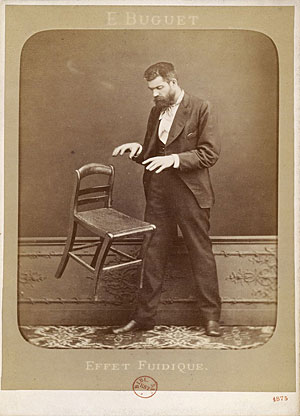How can you have stunning science fiction when science itself is so stunning? From “Superstuff: When Quantam Goes Big,” a Michael Brooks article at New Scientist:
“FOR centuries, con artists have convinced the masses that it is possible to defy gravity or walk through walls. Victorian audiences gasped at tricks of levitation involving crinolined ladies hovering over tables. Even before then, fraudsters and deluded inventors were proudly displaying perpetual-motion machines that could do impossible things, such as make liquids flow uphill without consuming energy. Today, magicians still make solid rings pass through each other and become interlinked – or so it appears. But these are all cheap tricks compared with what the real world has to offer.
Cool a piece of metal or a bucket of helium to near absolute zero and, in the right conditions, you will see the metal levitating above a magnet, liquid helium flowing up the walls of its container or solids passing through each other. ‘We love to observe these phenomena in the lab,’ says Ed Hinds of Imperial College, London.
This weirdness is not mere entertainment, though. From these strange phenomena we can tease out all of chemistry and biology, find deliverance from our energy crisis and perhaps even unveil the ultimate nature of the universe. Welcome to the world of superstuff.” (Thanks Browser.)
••••••••••
It’s only a trick, for now–1900:
Tags: Ed Hinds, Michael Brooks

